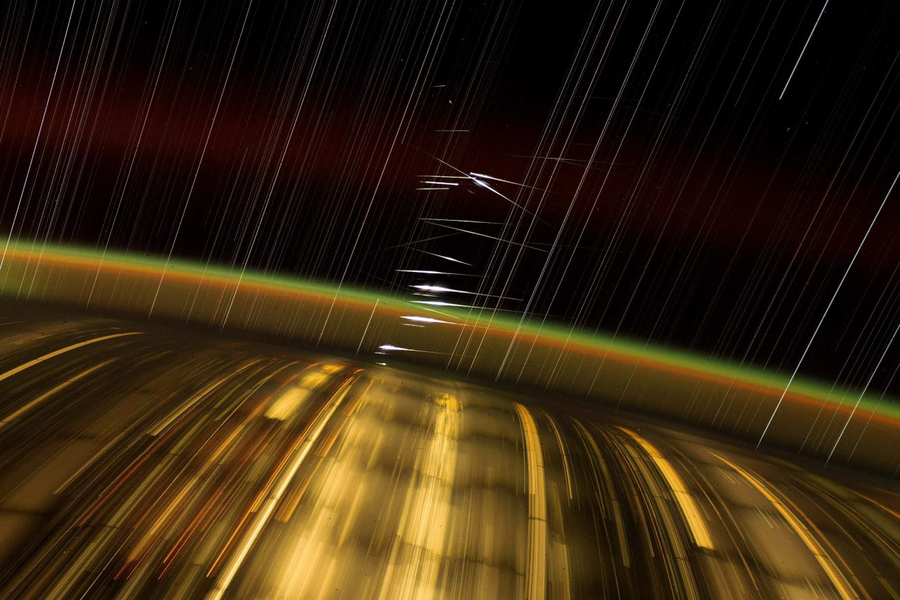In an unexpected twist to climate change consequences, MIT researchers have discovered that our greenhouse gas emissions aren’t just warming the planet—they’re dramatically altering the environment of near-Earth space, potentially cutting the safe operating capacity for satellites by more than half by the end of this century.
The study, published March 10 in Nature Sustainability, reveals how carbon dioxide and other greenhouse gases cause the upper atmosphere to contract, creating a cascade of effects that could eventually make certain orbital zones unusable for satellite operations.
“Our behavior with greenhouse gases here on Earth over the past 100 years is having an effect on how we operate satellites over the next 100 years,” explains study author Richard Linares, associate professor in MIT’s Department of Aeronautics and Astronautics.
While most climate discussions focus on warming temperatures and extreme weather events here on Earth, this research highlights how human activities are altering environments hundreds of miles above our heads—in the thermosphere, where the International Space Station and most satellites currently orbit.
The findings come at a critical moment as the satellite population has exploded in recent years. “More satellites have been launched in the last five years than in the preceding 60 years combined,” notes lead author William Parker, a graduate student at MIT. “One of key things we’re trying to understand is whether the path we’re on today is sustainable.”
The problem stems from an unexpected interaction between greenhouse gases and the upper atmosphere. While these gases trap heat in the lower atmosphere—causing the global warming we experience on Earth’s surface—they have the opposite effect at higher altitudes. In the thermosphere, greenhouse gases actually radiate heat away, cooling this atmospheric layer and causing it to contract.
This contraction reduces atmospheric density at satellite altitudes, which in turn decreases atmospheric drag—the natural force that pulls aging satellites and space debris down to burn up in the atmosphere. Less drag means space junk stays in orbit longer, increasing collision risks for operational satellites.
“The sky is quite literally falling—just at a rate that’s on the scale of decades,” Parker says. “And we can see this by how the drag on our satellites is changing.”
The team’s simulations paint a sobering picture. By comparing several scenarios based on the Intergovernmental Panel on Climate Change projections, they found that continued increases in emissions could reduce the “carrying capacity” of low Earth orbit by 50 to 66 percent by 2100, compared to a scenario where emissions remained at year-2000 levels.
This “carrying capacity”—a concept borrowed from ecology—describes how many satellites can safely operate in a given region of space without excessive collision risks. If exceeded, certain orbital regions could experience what researchers call a “runaway instability”—a cascade of collisions creating so much debris that satellites could no longer safely operate there.
The timing is particularly concerning given the rapid deployment of “megaconstellations” like SpaceX’s Starlink, which plans to operate thousands of internet satellites in low Earth orbit.
“The megaconstellation is a new trend, and we’re showing that because of climate change, we’re going to have a reduced capacity in orbit,” Linares says. “And in local regions, we’re close to approaching this capacity value today.”
Satellite services have become woven into the fabric of modern life, providing essential functions from internet and communications to weather forecasting, navigation, and banking. The predicted reduction in safe orbital capacity could therefore have far-reaching consequences for technology-dependent societies.
The thermosphere naturally expands and contracts on an 11-year cycle in response to the sun’s activity. Scientists had theorized since the 1990s that greenhouse gases might affect this region, but only in the last decade have they been able to measure changes in satellite drag that confirm the thermosphere is indeed contracting beyond what would be expected from natural solar cycles.
For their research, the MIT team—which included co-author Matthew Brown of the University of Birmingham—developed sophisticated models that combine atmospheric physics with orbital dynamics to estimate how different climate scenarios would affect specific “shells” or altitude ranges where satellites typically operate.
The research highlights an underappreciated aspect of our reliance on natural systems. “We rely on the atmosphere to clean up our debris. If the atmosphere is changing, then the debris environment will change too,” Parker explains. “We show the long-term outlook on orbital debris is critically dependent on curbing our greenhouse gas emissions.”
This adds a new dimension to climate policy discussions, suggesting that sustainable practices on Earth are necessary not just for protecting terrestrial environments but also for preserving humanity’s access to near-Earth space—an increasingly vital frontier for communications, science, and security.
As our digital infrastructure becomes more dependent on satellite services, this research suggests that addressing climate change isn’t just about saving the planet—it’s about maintaining our ability to use the space around it.
If our reporting has informed or inspired you, please consider making a donation. Every contribution, no matter the size, empowers us to continue delivering accurate, engaging, and trustworthy science and medical news. Independent journalism requires time, effort, and resources—your support ensures we can keep uncovering the stories that matter most to you.
Join us in making knowledge accessible and impactful. Thank you for standing with us!

